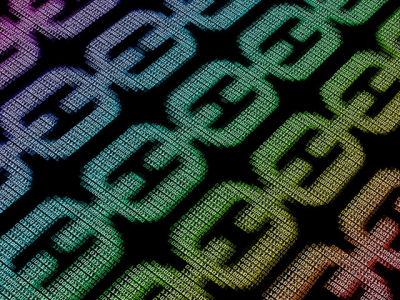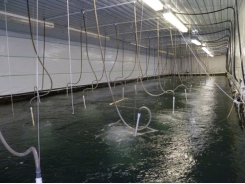Is aquaculture ready for the blockchain revolution?

Decentralized digital record-keeping requires commitment, trust and comes at a cost
Blockchain technology, the foundation for cryptocurrencies, may be the trustworthy traceability tool the industry needs in a digitally driven world.
The challenges facing aquaculture today are many, both on the water and off. Environmental regulations have tightened and the ever-influential marketplace is demanding supply chain transparency to ensure the products they buy are the products they’ve been promised.
An emerging technology called blockchain, which is best known today as the foundation for cryptocurrencies such as Bitcoin, may be the trustworthy traceability tool the industry needs in a digitally driven world. But is aquaculture really ready to go this high-tech?
As with most things, it’s complicated.
A global network
The blockchain is generally referred to as a decentralized ledger, a digital record of ownership and custody. It’s decentralized in the sense that no one person or entity owns or controls it – no individual, no corporation, no government – but it can be shared by everyone. That means that it is 100 percent agnostic – a pure, secure record and source of truth.
In cryptocurrencies, the blockchain serves as proof of ownership. For example, when someone acquires a Bitcoin their purchase is recorded on the Bitcoin blockchain. From there, anyone else, anywhere in the world, could look at that record and confirm that, yes, in fact they do own that Bitcoin. There are similar blockchain registers for each different cryptocurrency, and the power of the digital ledger is rapidly finding its way into other applications.
For instance, blockchain-based applications are currently being developed to support payment processing and money transfers, distributed cloud storage systems, digital identity protection, data sharing and more.
"Just because I put something on a blockchain doesn’t make the data any better."
Where does aquaculture, a truly global industry, fit in? With blockchain technology, aquaculture’s supply chain could go digital, enabling full traceability from farm to fork along with countless other advantages that would help bring global stakeholders together.
But it won’t be easy.
“Let’s imagine that tomorrow I created the perfect traceability solution for the seafood industry,” said Jayson Berryhill, partner with Eachmile Technologies, a digital supply chain startup focused on aquaculture. “Who gets to own it? Is everybody comfortable with the government owning it? And if so, which government?”
The truth, according to Berryhill, is that there’s really no good answer. Ownership of any backbone technology is always a sticky question, involving overlapping interests, financial entanglements and other conflicts.
That’s part of the appeal of blockchain. As a decentralized ledger it has no such conflicts. It can be owned by everyone and by no one.
“It’s an opportunity to have this almost worldwide computer that we can all save to, but no one clearly owns and no one can really manipulate,” Berryhill said.
But, as with any dataset, the “seafood blockchain” is only worth as much as the information that users save to it. That’s why Eachmile is developing a token system to reward seafood industry workers – from fish farmers, to shippers, to processors and more – who agree to upload their data to the blockchain and actively use it. These tokens – dubbed “Fishcoin” – can be exchanged for cell phone minutes, have value worldwide and are dedicated to building a blockchain user base all the way down the seafood value chain.
Supply chain 2.0
Traceability is also the goal of a project that’s currently in development at the Global Aquaculture Alliance. Currently in testing as part of the Best Aquaculture Practices (BAP) program, it is a blockchain-based traceability application aimed at BAP-certified facilities. Once in use, it will allow certified facilities to prove their BAP star status – stars represent hatchery, feed mill, farm and processing plant certifications – to the marketplace by using a combination of chain-of-custody and mass-balancing techniques.
“Chain-of-custody refers to tracking a product through the supply chain,” said Andy Raynor, GAA’s former information technology manager who launched the initiative. “Traditionally this was done through paper tracking, but what we’re working on is something that is going to track every lot from certified facility to certified facility all the way through the production chain.”
(Editor’s note: Raynor departed the organization in November but the project is still proceeding.)
All of the data about a given facility’s products will be stored securely in the blockchain, providing everyone down the chain with a verifiable, trackable source of truth about everything from species, to location, to volume and more. In effect, it’s extending the assurances of the certification program to the entire supply chain, Raynor said.
For example, a retailer with a four-star BAP commitment could use the system to see the flow of product directly from the pond to its stores, without ever having to worry that the supply chain is being disrupted or an incorrect product was delivered.
“What blockchain offers the industry is a certain level of trust,” Raynor said. “Every other technology that existed before had a way to be corrupted – databases can be altered, individuals can make changes. With blockchain, that record can’t be changed.”
Seattle-based Trace Register is working on similar solution with its TR Full-Chain Traceability product, which brings together both tracking events (such as where a given fish is located at any given time in the supply chain) and data elements (such as where that fish was raised and whether or not it is BAP certified). This is intended to eliminate data siloing and improve both data quality and value.
“Clearly we’re seeing customers asking for a lot more,” said Dr. Dag Heggelund, Trace Register’s chief technology officer. “So there’s an explosion in the amount of data that needs to be collected and managed [by the industry].”
The blockchain is the perfect solution for this, he said, because it simplifies the process of integrating data from multiple applications. So information from a processing plant can be lined up with data from a fish farm and all of it can be preserved and moved seamlessly through different systems.
“This type of data integration is something that blockchains are very well suited for,” Heggelund said. “It’s not about data quality. Just because I put something on a blockchain doesn’t make the data any better. It’s more about the temporal aspect of that data. Did somebody change it or am I viewing that data as it was originally entered and who changed it?”
Next steps
Blockchain technology holds a lot of promise for aquaculture but building consensus for a bold technology move among diverse stakeholders could be a challenge, said Raynor. Failing to act, however, could be tantamount to missing the train.
“Let’s say you’re a farmer, and you don’t necessarily have endless funding to install these systems,” said Raynor. “You might fall behind if you’re not willing to step up now and pay for the hardware and do what you need to do to participate in this.”
As of right now, the cost of participation in the growing aquaculture blockchain is a very real hurdle – farmers, processors, shippers, distributors, retailers and more would all have to invest today in order to enjoy the benefits tomorrow. Those costs can be variable as well. Implementing a blockchain solution for the industry is on par with a major software development project, entailing everything from a software backbone, to hardware sensors, to processing power and more, all of which can add up to millions of dollars. In fact, electricity is a major cost concern around blockchain, with 2018 estimates as high as $25 to $160 per transaction due purely to the power demands of the related processing hardware.
Worst of all, if enough links in the chain opt out of participating in whatever blockchain platform takes hold, the quality of the data industrywide would suffer.
Those that are able to participate would rise to the top, and those that can’t would fall further and further behind.
“Digital traceability is a disruptive technology,” Raynor added, “so how do we move the needle [across the entire industry]? By participating with willing and able producers who have technologically sufficient facilities to distinguish themselves in the marketplace? By supporting others as they prepare for this? Getting it all started is the real challenge, whether or not the industry is ready for it.”
Có thể bạn quan tâm
Phần mềm

Phối trộn thức ăn chăn nuôi

Pha dung dịch thủy canh

Định mức cho tôm ăn

Phối trộn phân bón NPK

Xác định tỷ lệ tôm sống

Chuyển đổi đơn vị phân bón

Xác định công suất sục khí

Chuyển đổi đơn vị tôm

Tính diện tích nhà kính

Tính thể tích ao hồ




 US scraps anti-dumping duty on Vietnamese shrimp
US scraps anti-dumping duty on Vietnamese shrimp  Plans to roll out novel vannamei production system
Plans to roll out novel vannamei production system